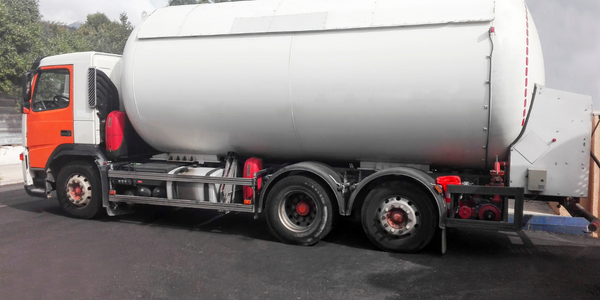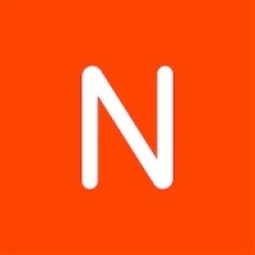Customer Company Size
Large Corporate
Region
- Asia
Country
- Thailand
Product
- EthicsPoint
Tech Stack
- Incident Management System
Implementation Scale
- Enterprise-wide Deployment
Impact Metrics
- Employee Satisfaction
- Customer Satisfaction
Technology Category
- Application Infrastructure & Middleware - Data Exchange & Integration
Applicable Functions
- Human Resources
Use Cases
- Intrusion Detection Systems
Services
- System Integration
About The Customer
Soneva is a sustainable luxury resort group founded by Sonu Shivdasani and his wife, Eva Malmström Shivdasani, in 1995. The company has properties in the Maldives and Thailand and employs over 1,000 people. Soneva prides itself on open lines of communication between its employees, referred to as hosts, and management. The company is committed to ensuring that its hosts feel safe and secure and has implemented measures to enhance its communication channels to facilitate this. Soneva is also working to increase the representation of women in its workforce, particularly in the Maldives where only 4% of women are in the workforce. Currently, 18% of its workforce are women and the company is aiming to increase this number.
The Challenge
Soneva, a luxury resort group with properties in the Maldives and Thailand, was facing a challenge in ensuring that its employees, referred to as hosts, felt safe and secure. The company had open lines of communication between hosts and management, but there were instances when female hosts were hesitant to use these direct lines to report sensitive issues or discuss concerns. The company wanted to ensure that hosts would always feel comfortable to approach the company to discuss any issue, so they decided to look for a way to enhance the existing lines of communication by providing a safe way for hosts to make a report directly to the senior leadership team.
The Solution
Soneva turned to NAVEX Global’s incident management solution, EthicsPoint, to provide a safe, anonymous reporting solution. This was not only available to all hosts to report any incidents that they witnessed that went against Soneva’s Core Values, but also opened an additional line of communication for Soneva’s female hosts working at the resorts in the event that they experienced any incidents that made them feel uncomfortable. Soneva uses a version of EthicsPoint that provides employees with secure online access to a confidential reporting system. The company worked with NAVEX Global customer support to customise the website’s submission page and set up the case management system to provide a secure repository to track and review each report to Soneva’s specific needs. NAVEX Global also worked to translate the online report intake form into Thai.
Operational Impact
Quantitative Benefit

Case Study missing?
Start adding your own!
Register with your work email and create a new case study profile for your business.
Related Case Studies.

Case Study
Protecting a Stadium from Hazardous Materials Using IoT2cell's Mobility Platform
There was a need for higher security at the AT&T Stadium during the NFL draft. There was a need to ensure that nuclear radiation material was not smuggled inside the stadium. Hazmat materials could often be missed in a standard checkpoint when gaining entry into a stadium.

Case Study
Visual Management on Gas Tankers
Gas tankers are massive ships with a limited crew, making them extremely difficult to monitor. Video surveillance systems, which use a large number of widely distributed devices, and fire prevention systems are both crucial elements of a gas tanker monitoring system.The system used for this application is a legacy analog CCTV surveillance system that is completely independent from the main monitor and control SCADA system. With this system, the administrator responds to an event by first using the SCADA system to locate the event, and then accesses the appropriate surveillance camera from the CCTV system to view the location. The goal is to upgrade the system so that only one step is required. This is done by integrating the CCTV surveillance system into the SCADA system, in which case the surveillance system becomes a SCADA sub-system, making centralized control and monitoring possible.System Requirements- Upgrade to an IP video surveillance system for integration with the existing SCADA system- Live video display (through the SCADA system)- Enable events in the SCADA system to automatically trigger live video display- All the devices need to be of rugged design and have an anti-explosion defense

Case Study
Leveraging Graph Technology for Enhanced Cybersecurity: A Case Study on MITRE's CyGraph
MITRE, a federally-funded, not-for-profit company that manages seven national research and development laboratories in the United States, was grappling with the challenge of managing an influx of cybersecurity data. The constant changes in network environments were impacting the security posture of U.S. government agencies. Intrusion alerts, anti-virus warnings, and seemingly benign events like logins, service connections, and file share access were all potentially associated with adversary activity. The cybersecurity researchers at MITRE needed to go beyond rudimentary assessments of security posture and attack response. This required merging isolated data into higher-level knowledge of network-wide attack vulnerabilities and mission readiness. The challenge was not the lack of information, but the ability to assemble disparate pieces of information into an overall analytic picture for situational awareness, optimal courses of action, and maintaining mission readiness. The team also struggled with fully comprehending a given security environment and mapping all known vulnerabilities.

Case Study
EMC's Transition to SMS for Real-Time IT Alerts
EMC, a global leader in cloud computing, data storage, and data virtualization, was struggling with an inefficient and slow method of alerting its 68,000 employees about IT system updates. The traditional method involved drafting an email, proofing it, getting approval from several stakeholders, and finally sending it. This process was not only labor-intensive but also unreliable as it depended on the user's email being unaffected and the user actually opening and reading the email. After sending 1.2 million alert emails in a single month, EMC decided to find a more efficient and immediate way to alert employees. The challenge was to find a solution that was not only faster and less labor-intensive but also globally available and scalable to EMC's needs.

Case Study
Mitigating Cybersecurity Risks in Manufacturing: A Case Study of Jacobs Douwe Egberts
Jacobs Douwe Egberts (JDE), a global coffee and tea company, faced a significant challenge in the wake of a malware incident in 2017 that caused a computer outage across Mondelez’s global operations, resulting in losses of €100M. This incident served as a wake-up call for JDE to implement a robust cybersecurity program to protect its operational technology (OT), including the industrial control system (ICS) environment across its factories worldwide. The advent of Industry 4.0 has led to increased interconnectivity in manufacturing environments, making them more vulnerable to cyberattacks. Traditional IT security measures were no longer sufficient to protect JDE's manufacturing operations. The company needed a comprehensive overview of all cybersecurity risks and vulnerabilities across its factories, including all operational technology computing systems used to manage the entire industrial operation.

Case Study
Modernizing the Angolan Government Agency Voter ID Program with IoT
The Angolan government agency was seeking to upgrade its voter ID system ahead of the elections in Q3 2017. The aim was to increase the number of citizens eligible to vote by issuing voter IDs in a short time frame. The existing voter ID printing system needed to be replaced with a solution that reduced costs significantly by providing mobility and streamlining operational processes. The key selection criteria included a faster throughput secure issuance printer solution, a de-centralized secure issuance solution to increase the number of citizens enrolled, a Wi-Fi based secure issuance printing solution for increased convenience, improved reliability of the printing solution, a lightweight, easy-to-use portable solution for collecting citizens’ data and issuing voter IDs for citizens residing in remote areas, and high levels of security to combat fraud and minimize the number of counterfeit voter IDs.







